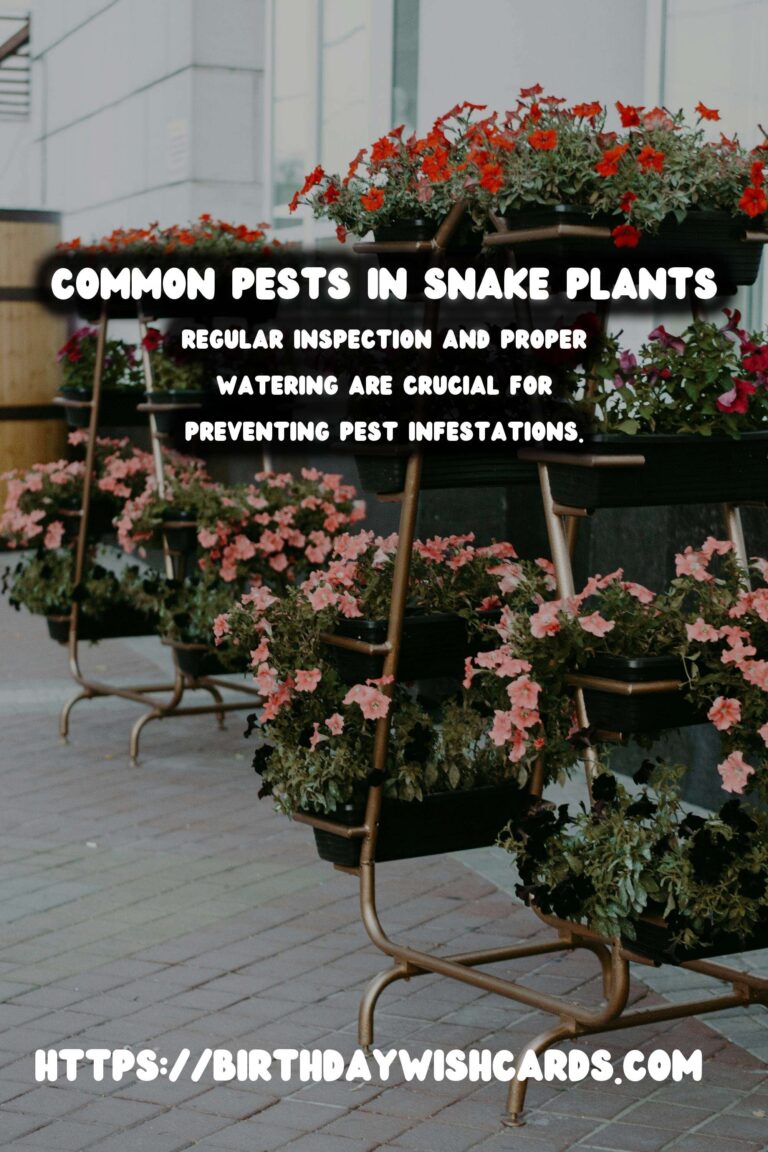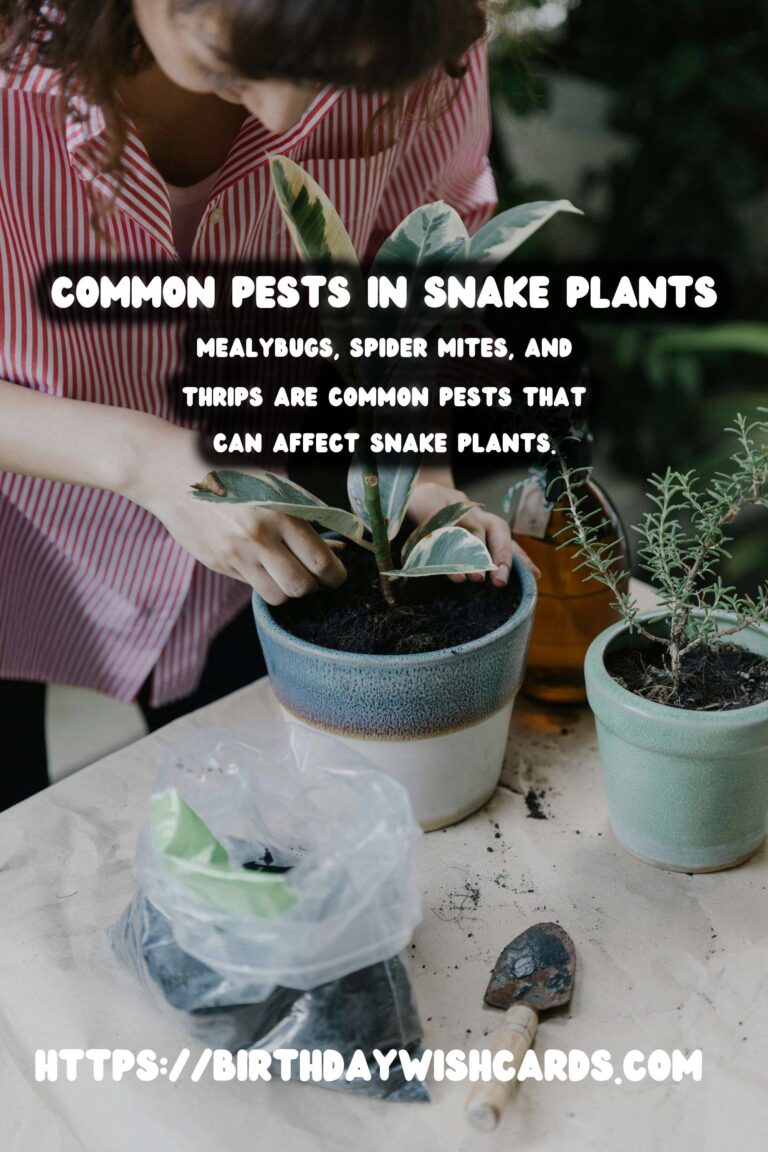
Snake plants, also known as Sansevieria or mother-in-law’s tongue, are popular indoor plants known for their resilience and air-purifying qualities. However, like any plant, they can fall prey to certain pests that can hinder their growth and vitality. Understanding these pests and how to manage them is crucial for maintaining healthy snake plants.
Common Pests Affecting Snake Plants
Snake plants are generally hardy and resistant to many insects and diseases, but they are not completely immune. Here are some common pests to watch for:
1. Mealybugs
Mealybugs are small, soft-bodied insects that appear as white, cottony masses on the leaves and stems. They suck the sap from the plants, leading to yellowing and wilting.
2. Spider Mites
Spider mites are tiny arachnids that can cause significant damage to snake plants. They feed on plant sap, causing stippling on leaves and, in severe cases, leaf drop.
3. Thrips
Thrips are slender, winged insects that feed on plant tissues, causing silvery streaks and deformities on the leaves. They can spread quickly and cause considerable damage if not controlled.
How to Identify Pest Infestations
Regular inspection of your snake plants is essential for early pest detection. Look for signs such as:
- Discoloration or yellowing of leaves
- Leaf spots or streaks
- Webbing on leaves, indicative of spider mites
- Presence of white, cottony masses (mealybugs)
Effective Pest Management Strategies
Once you identify a pest problem, it’s important to act quickly. Here are some effective strategies:
1. Manual Removal
For light infestations, manually removing pests with a damp cloth can be effective. Ensure to clean both sides of the leaves.
2. Neem Oil
Neem oil is a natural pesticide that can be sprayed on the leaves to control pests like mealybugs and spider mites.
3. Insecticidal Soap
Insecticidal soap is safe to use on snake plants and effective against soft-bodied insects. Apply it thoroughly to all plant surfaces.
Preventative Measures
Preventing pests is better than dealing with infestations. Here are some preventative measures:
1. Regular Inspection
Check your plants regularly for any signs of pests, especially during the growing season.
2. Proper Watering
Avoid overwatering, as it creates a favorable environment for pests. Ensure proper drainage.
3. Quarantine New Plants
Always isolate new plants for a few weeks to ensure they are pest-free before introducing them to your collection.
Conclusion
Caring for snake plants involves being vigilant about potential pest issues. By understanding the common pests that affect these plants and employing effective management and preventative strategies, you can ensure that your snake plants remain healthy and thriving.
Snake plants are popular indoor plants known for their resilience and air-purifying qualities. Mealybugs, spider mites, and thrips are common pests that can affect snake plants. Regular inspection and proper watering are crucial for preventing pest infestations. Neem oil and insecticidal soap are effective treatments for controlling pests on snake plants. Quarantining new plants can help prevent the introduction of pests to your existing collection.
#SnakePlants #PlantCare #GardeningTips #IndoorPlants #PestControl

